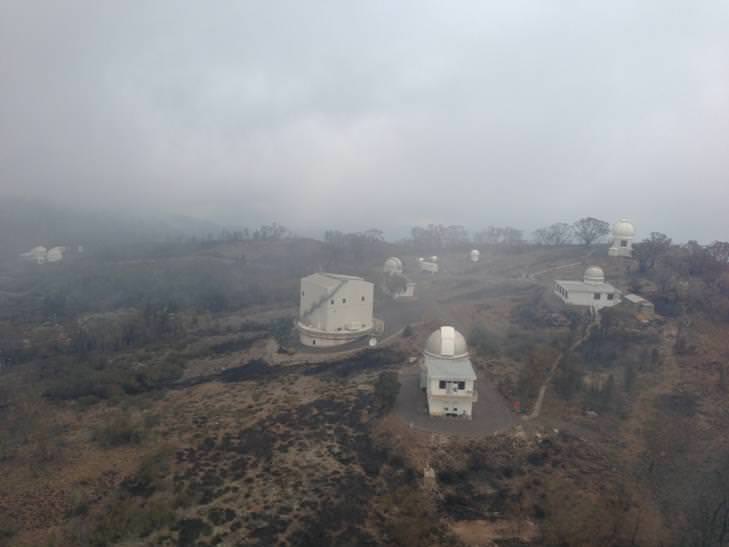Space is big, really big! Finding new asteroids which are usually dark against the inky blackness of space is harder than looking for a needle in a cosmic haystack. Back in 1991 an astronomer discovered a kilometre wide asteroid which was subsequently found to have a smaller moon half its size. It was given the snappy name of 1991 VH which , after follow up observations was revealed to have a tumbling, chaotic rotation. This was the first binary asteroid that has been seen to exhibit this behaviour. A paper just published suggests that a close encounter with Earth as recently as 12,000 years ago could have started its tumbling motion.
Continue reading “This Binary Asteroid is Messed Up. It’s Probably Earth’s Fault”Bush Fires Damage Australian Observatory
The Siding Springs Observatory complex has suffered damage from wild fires burning across New South Wales, Australia. An initial assessment, according to the Australian National University, indicates that while no telescopes appear to have received major damage, five buildings have been severely affected or damaged, including the Lodge used to accommodate visiting researchers and a number of cottages and sheds. Additionally, it appears the Visitor Center has been severely damaged.
Apparently, firefighters from the New South Wales Rural Fire Service worked through the night to save the telescopes. “This is a large and dangerous bush fire,” the RFS said. Crews were battling difficult conditions, with temperatures in the area above 40 degrees Celsius (104 Fahrenheit) and hot north-westerly gusts of about 60 kilometers per hour, according to news reports.
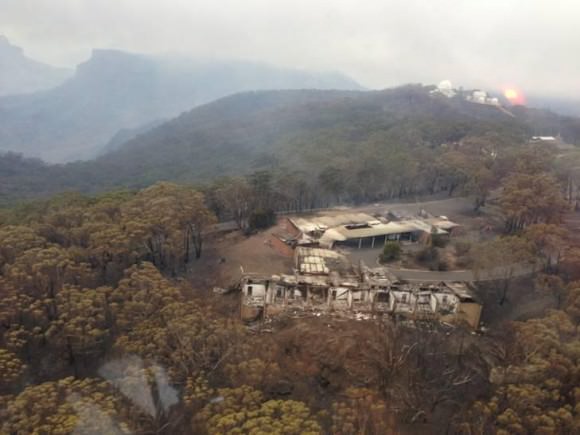
The observatory is located in the Warrumbungle National Park to the West of Coonabarabran, about 500 kilometres (310 miles) north-west of Sydney. Siding Spring is the largest optical observatory in Australia and a major infrared observatory that is home to 10 operating telescopes run by international researchers.
Astronomer Amanda Bauer, who works for the Australian Astronomical Observatory, provided updates and images on her blog over several hours, maintaining watch on all-sky webcams that overlook the observatory complex. See her complete coverage from January 13, and an update as morning dawned on January 14 in Australia.
All observatory staff were evacuated before the fire and were safe, according to astronomer Robert McNaught, who posted an update on a comet and asteroids researchers user group site. Unfortunately, several homes in the area were destroyed.
Ten years ago this week the Mt. Stromlo Observatory in Australia was almost completely destroyed by bush fires.
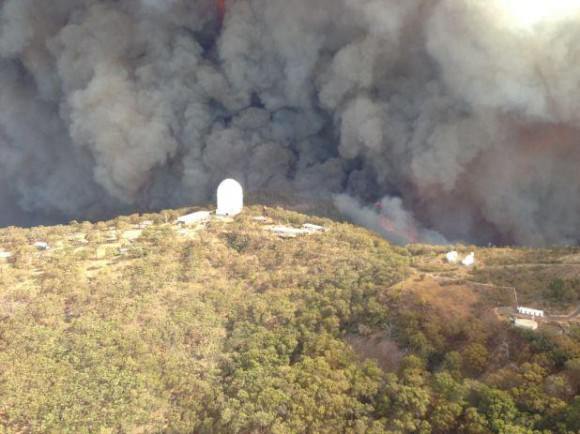
Temperatures inside some of the telescopes were dangerously high, according to remote readings, and some damage may have occurred to the delicate instruments. Until the staff can return to the complex and check on the telescopes, the extent of the damage won’t be known.
“I fear a lot of damage has been done though, even if not the wholesale destruction we faced in 2003 at MSO,” said astronomer Brian Schmidt, who heads the SkyMapper telescope at the site, via Twitter. “Tomorrow will tell, and then will come the long, slow process of recovery.”
Additional sources: Australian National University, 9 News.
Runaway Star Needs Its Own Reality Docu-Drama
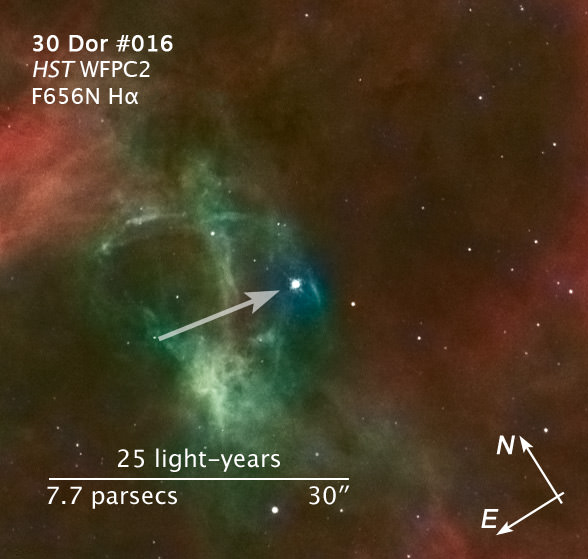
[/caption]
In an astronomical version of “Biggest Loser” meets “Survivor,” a heavy weight star has been kicked out of its stellar nursery. This huge runaway star is rushing away from its birthplace at more than 402,336 kilometers per hour (250,000 miles an hour), and it likely was ejected by a group of even larger sibling stars. The future outlook for this tough-luck star seemingly doesn’t improve: Paul Crowther of the University of Sheffield, a member of the team who made the observations of 30 Dor #016, said the wayward star will continue to streak across space and will eventually end its life in a titanic supernova explosion, likely leaving behind a remnant black hole. There’s a new reality series in there somewhere!
The star on the run is found 375 light-years from its suspected home, a giant star cluster called R136 in 30 Doradus, also called the Tarantula Nebula, about roughly 170,000 light-years from Earth. R136 contains several stars topping 100 solar masses each. 30 Dor #016 is 90 times more massive than our Sun.
Astronomers say runaway stars can be made in a couple of ways: a star may encounter one or two heavier siblings in a massive, dense cluster and get booted out through a stellar game of pinball. Or, a star may get a ‘kick’ from a supernova explosion in a binary system, with the more massive star exploding first.
“It is generally accepted, however, that R136 is sufficiently young, 1 million to 2 million years old, that the cluster’s most massive stars have not yet exploded as supernovae,” says COS team member Danny Lennon of the Space Telescope Science Institute. “This implies that the star must have been ejected through dynamical interaction.”
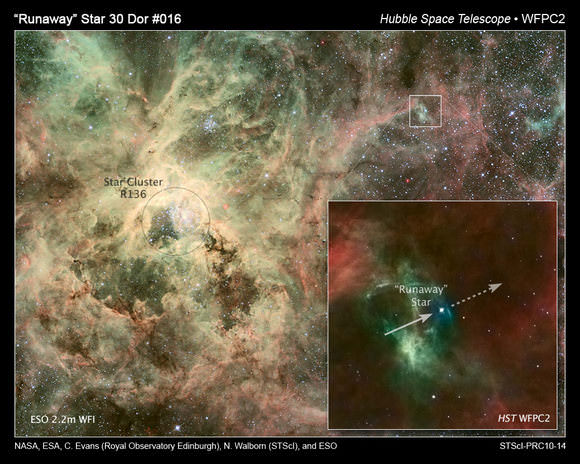
The renegade star may not be the only runaway in the region. Two other extremely hot, massive stars have been spotted beyond the edges of 30 Doradus. Astronomers suspect that these stars, too, may have been ejected from their home. They plan to analyze the stars in detail to determine whether 30 Doradus might be unleashing a barrage of massive stellar runaways into the surrounding neighborhood.
The observations came from a team-effort using Hubble’s newly installed Cosmic Origins Spectrograph (COS) to take an image of the region in 2009, an optical image of the star taken by the Wide Field Planetary Camera 2 in 1995, and another spectroscopic study from the European Southern Observatory’s Very Large Telescope (VLT) at the Paranal Observatory. It was first observed in 2006 when a team led by Ian Howarth of University College London spotted it with the Anglo-Australian Telescope at Siding Spring Observatory.
COS’s ultraviolet spectroscopic observations showed that the wayward star is unleashing a fury of charged particles in one of the most powerful stellar winds known, a clear sign that it is extremely massive, perhaps as much as 90 times heavier than the Sun. The star, therefore, also must be very young, about 1 million to 2 million years old, because extremely massive stars live only a few million years.
The VLT observations revealed that the star’s velocity is constant and not a result of orbital motion in a binary system. Its velocity corresponds to an unusual motion relative to the star’s surroundings, evidence that it is a runaway star.
The study also confirmed that the light from the runaway is from a single massive star rather than the combined light of two lower-mass stars. In addition, the observation established that the star is about 10 times hotter than the Sun, a temperature that is consistent with a high-mass object.
“These results are of great interest because such dynamical processes in very dense, massive clusters have been predicted theoretically for some time, but this is the first direct observation of the process in such a region,” says Nolan Walborn of the Space Telescope Science Institute in Baltimore and a member of the COS team that observed the misfit star. “Less massive runaway stars from the much smaller Orion Nebula Cluster were first found over half a century ago, but this is the first potential confirmation of more recent predictions applying to the most massive young clusters.”
The research team, led by Chris Evans of the Royal Observatory Edinburgh, published the study’s results May 5 in the online edition of The Astrophysical Journal Letters.
Science paper by Evans, et al. 2010
Source: HubbleSite


